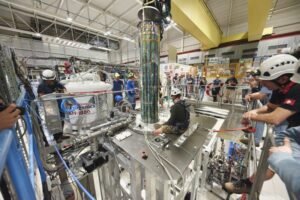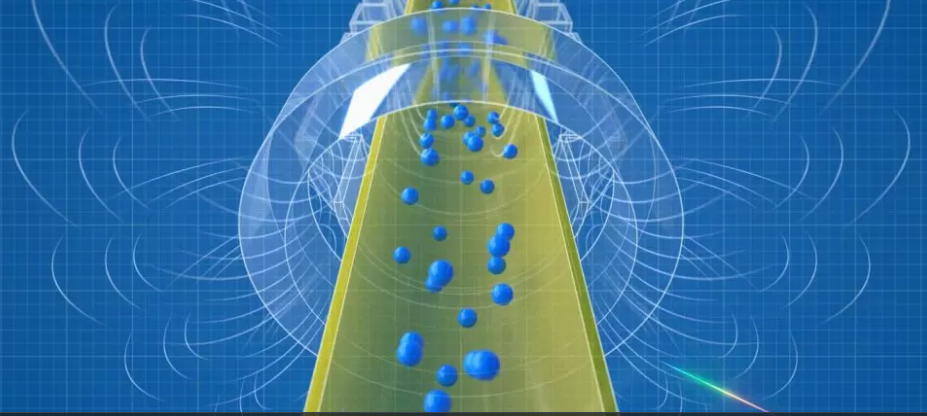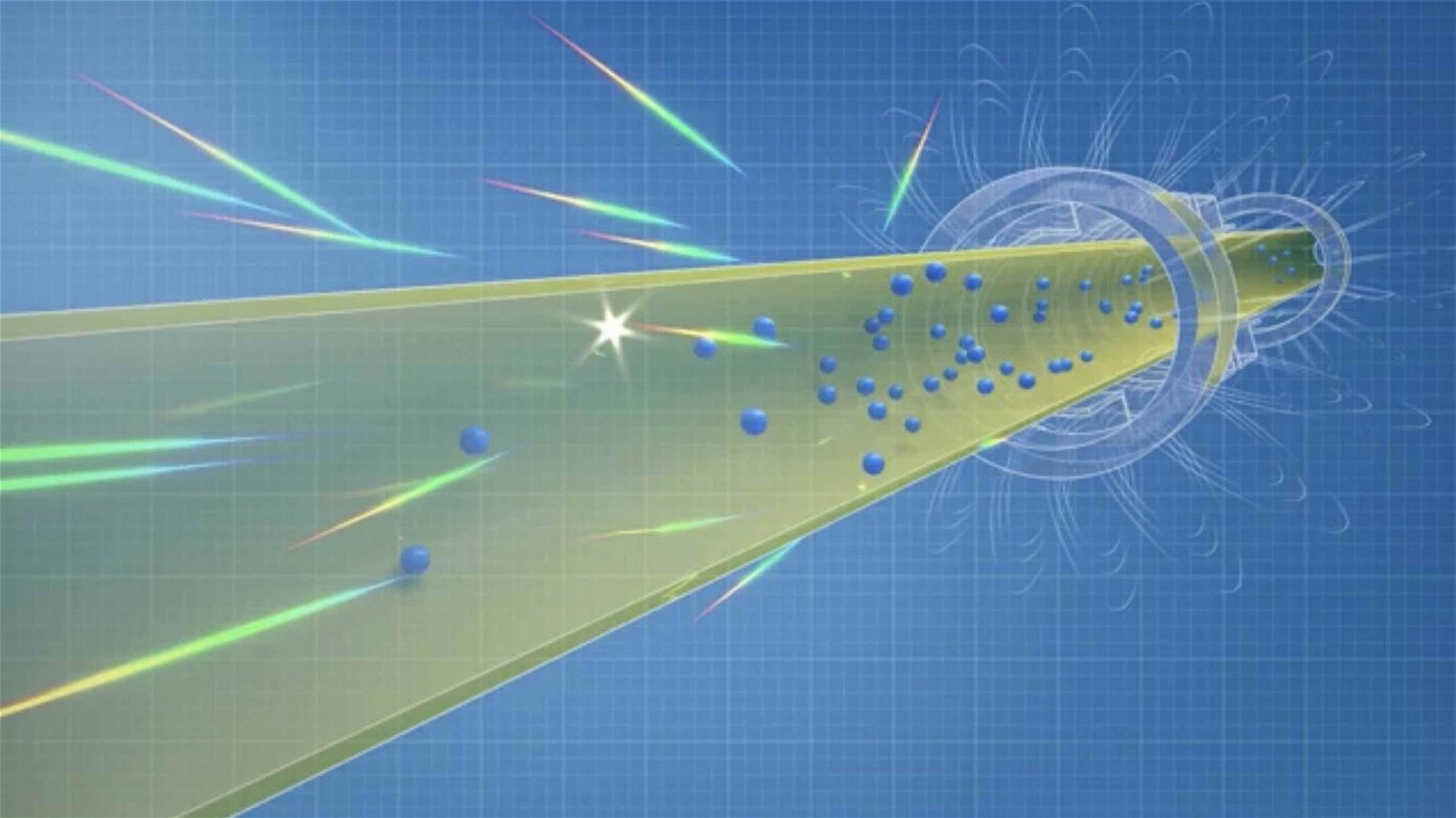New research from the National Science Foundation (NSF) performed at the CERN laboratories in Switzerland shows that antimatter reacts to gravity until it suffers from catastrophic self-annihilation, just as Albert Einstein predicted.
While previous experiments have seemed to lend support to Einstein’s theory of general relativity, this latest result is the first to actually show definitively that gravity affects antimatter in the same way it affects matter.
“Einstein’s theory of general relativity says antimatter should behave exactly the same as matter,” says Jonathan Wurtele, University of California, Berkeley, plasma physicist and ALPHA collaboration member. “Many indirect measurements indicate that gravity interacts with antimatter as expected, but until the result today, nobody had actually performed a direct observation that could rule out, for example, antihydrogen moving upwards as opposed to downwards in a gravitational field.”
Antimatter Could Fuel Starships Just Like Star Trek
Even before Star Trek promised viewers antimatter-driven starships that could race across the galaxy at warp speeds, scientists have marveled at the tremendous energy potential of antimatter. That’s because antimatter, which is essentially the twin to regular matter that makes up all of the material around us, including people, has a rather explosive property. When it comes in contact with regular matter, all of the energy stored in both is instantaneously released. It’s an event so potent and catastrophic that scientists don’t call it an explosion but an annihilation.
“As soon as antimatter touches matter, it blows up,” says ALPHA collaboration member and UC Berkeley plasma physicist Joel Fajans. “For a given mass, such annihilations are the densest form of energy release that we know of.”
In fact, such an annihilation releases even more energy than the holy grail of energy generation, nuclear fusion. Unfortunately, generating enough antimatter to use in any practical way has remained out of reach for modern-day physicists, much less building an “antimatter reactor” like the one maintained by Lieutenant Commander Montgomery Scott (a.k.a. Scotty) on the Starship Enterprise.
The main issue has been creating and storing antimatter, mainly due to its tendency to annihilate. Another of the many hurdles to storing antimatter has been predicting how it will react to its local environment if shielded from regular matter to prevent annihilation, including how it will react to the forces of nature, including gravity.
“We have to manipulate the antimatter very carefully, or we will lose it,” says Fajans.


Credit: CERN
Experiment Reveals Einstein Was Right…Again
In their experiment, the CERN team working in the complex’s “Antimatter Center” used a delicate process involving the antiprotons (created by the particle accelerator) and positrons (harvested from an artificial radioactive isotope of sodium) to create particles of antihydrogen, the antimatter twin of hydrogen. Once created and collected, both the antiprotons and the positrons, which are themselves particles of antimatter, are then cooled to room temperature. The result is an antimatter plasma.
Next, the team needed to cool these particles down to an extremely low temperature to conduct their experiment.
“Plasmas are normally the hottest form of matter,” explains Wurtele. “But we need to cool them to temperatures where almost everything would typically be solid or liquid.”
“The vast majority of the experimental time is spent doing plasma manipulations to get these antiparticle plasmas into the shape and temperature that we need them to be,” added Fajans. “We have to cool them to about 10 degrees Kelvin — that’s 10 degrees above absolute zero — and we must form them into needle-like shapes.”
Once the desired temperature is reached, the particles are combined inside the ALPHA-G reactor and mixed with exacting precision. If done correctly, particles of antihydrogen are produced. These antihydrogen particles are then observed to see if they fall down due to the effects of gravity or do something else entirely.
“Broadly speaking, we’re making antimatter, and we’re doing a Leaning Tower of Pisa kind of experiment,” says Wurtele, referring to a famous (and possibly made-up) story of Galileo dropping objects from the tower to test the effects of gravity on different sizes and shapes. “We’re letting the antimatter go, and we’re seeing if it goes up or down.”
Sure enough, after weakening the magnetic fields that hold the antimatter in place so it won’t touch regular matter and self-annihilate, the scientist saw the effects of gravity operating on the antihydrogen particles.


“About 80% of the antihydrogen atoms annihilated beneath the trap,” the press release announcing the breakthrough experiment explains, “a result consistent with how a cloud of regular hydrogen would behave under the same conditions.”
In effect, gravity was causing the antihydrogen to fall down exactly as if it were regular hydrogen. It was the result the experimental team had hoped for, but one that had never actually been proven before.
“Previously, there have been many indirect observations that strongly suggest that antimatter gravitates normally,” says Fajans. “But none of those observations were as incontrovertible as following the trajectories of antimatter under the influence of gravity; they all relied on much more subtle phenomena.”
Research Could Be Next Step Toward Building an Antimatter Engine
Of course, there are still a great number of technical hurdles to producing and storing useable antimatter in any viable quantities. But now that the effects of gravity on antimatter have been directly observed, researchers are one step closer to Scotty’s elusive anti-matter-fueled starship engine.
“Understanding the nature of antimatter can help us not only understand how our universe came to be but can enable new innovations never before thought possible,” said “Vyacheslav “Slava” Lukin, a program director in NSF’s Division of Physics.
Christopher Plain is a Science Fiction and Fantasy novelist and Head Science Writer at The Debrief. Follow and connect with him on X, learn about his books at plainfiction.com, or email him directly at christopher@thedebrief.org.

